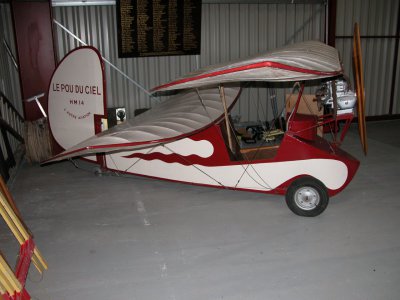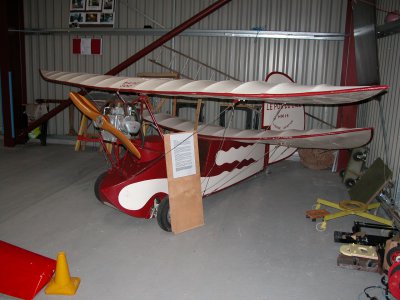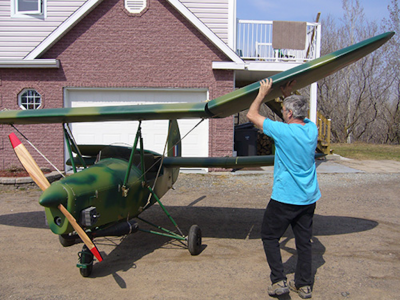- Joined
- May 27, 2016
- Messages
- 3,469
This was a case of "needs must", involving a crazy 4-jaw setup that included a piece of wood chipboard salvaged from the trash. It was for a 1930's Douglas boxer style engine that would have seen WW2 service powering a searchlight, but had been fitted to a tiny flying death-trap called "Le Pou du Ciel". The copper head gasket needed to be replaced, and finding another was always going to be impossible. It had to be made from scratch.
Just like Matt Damon in "The Martian", the best option ended up as "drill a series of holes all the way around". My jigsaw blade was only good for wood, and to be honest, would have had trouble cutting up a cardboard box! Copper is soft, goopy stuff. I was using a cordless Makita drill. The holes were not great, and attempting to use a half-round file was not going well. That file is not seriously going to be used again!
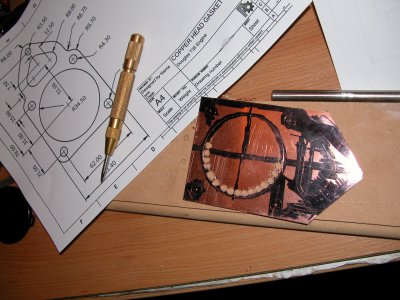 _ _ _
_ _ _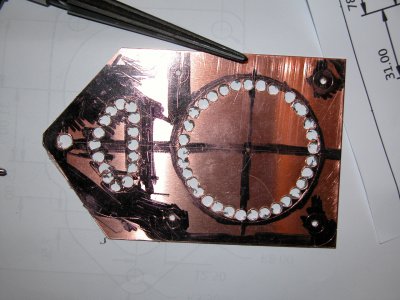
So i resorted to the green South Bend that I had acquired for $147. Except for messing about on some old bolt to try it out, this would be it's first real job. All it had seen was some WD40, a bit of a wipe, and some random oil I had to hand. Securing the partly cut out gasket to a piece of wood, and holding it with the 4-jaw that I found in one of the drawers of the lathe bench seemed the only way. This was not actually "trepanning", but it worked to make the gasket have a clean cut hole that would seal on the cylinder head. The copper has to be "just right" to distort into a seal at that edge. I had to make all the gaskets from scratch, including the exhaust pipe things.
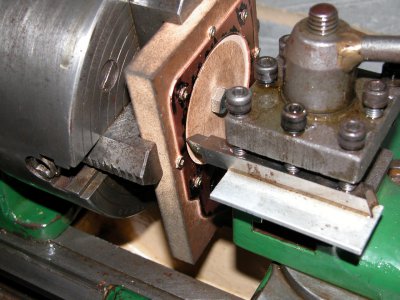 _ _ _
_ _ _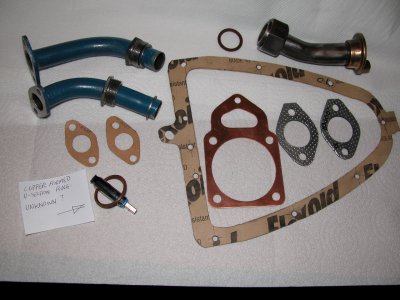
This old engine was clearly rough-and-ready wartime no frills stuff, and I think the eventual demise of the company that produced it was probably inevitable, though the engine does use the same spark plugs as in Rolls-Royce "Merlins" as used on P51's and Spitfires.
I finally got the 0.15mm (0.006") thick copper wire trick to work by resorting to pound-store CA super-glue. The picture here is of my rehearsal attempt on one of the dinged-up original gaskets that I had annealed and tried to restore. This seal turned out to be unnecessary, but went in as "belt-and-braces" anyway.
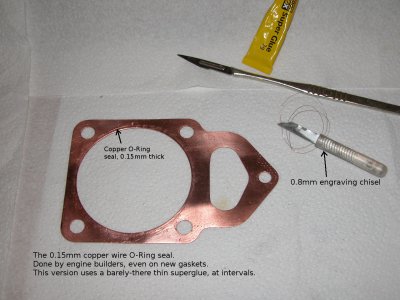
What I was after was something like this..
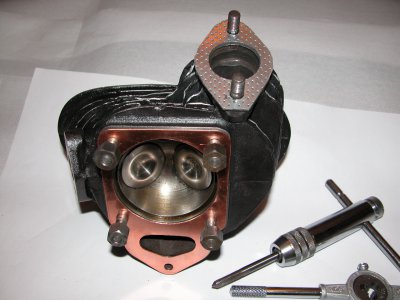
There was a whole lot of other stuff that had to be done, like magneto re-work, and TIG welding up rocker cover holes, but we gloss over all that. The end result was reasonably respectable, and it ran immediately when we flicked it over.
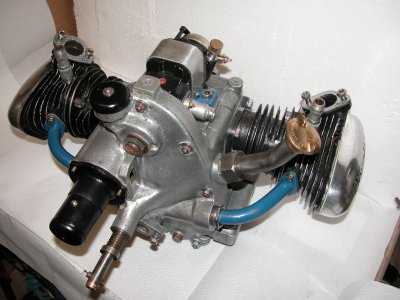
It turned out OK, and when cleaned up, it counters the grubby, disorganized conditions around it at the time, and that less than kosher setup involving the piece of scrap wood board!
[Edit: See from the logo on the drawing in the first picture that this was one of my early forays into making FreeCAD useful. ]
]
Just like Matt Damon in "The Martian", the best option ended up as "drill a series of holes all the way around". My jigsaw blade was only good for wood, and to be honest, would have had trouble cutting up a cardboard box! Copper is soft, goopy stuff. I was using a cordless Makita drill. The holes were not great, and attempting to use a half-round file was not going well. That file is not seriously going to be used again!
 _ _ _
_ _ _
So i resorted to the green South Bend that I had acquired for $147. Except for messing about on some old bolt to try it out, this would be it's first real job. All it had seen was some WD40, a bit of a wipe, and some random oil I had to hand. Securing the partly cut out gasket to a piece of wood, and holding it with the 4-jaw that I found in one of the drawers of the lathe bench seemed the only way. This was not actually "trepanning", but it worked to make the gasket have a clean cut hole that would seal on the cylinder head. The copper has to be "just right" to distort into a seal at that edge. I had to make all the gaskets from scratch, including the exhaust pipe things.
 _ _ _
_ _ _
This old engine was clearly rough-and-ready wartime no frills stuff, and I think the eventual demise of the company that produced it was probably inevitable, though the engine does use the same spark plugs as in Rolls-Royce "Merlins" as used on P51's and Spitfires.
I finally got the 0.15mm (0.006") thick copper wire trick to work by resorting to pound-store CA super-glue. The picture here is of my rehearsal attempt on one of the dinged-up original gaskets that I had annealed and tried to restore. This seal turned out to be unnecessary, but went in as "belt-and-braces" anyway.

What I was after was something like this..

There was a whole lot of other stuff that had to be done, like magneto re-work, and TIG welding up rocker cover holes, but we gloss over all that. The end result was reasonably respectable, and it ran immediately when we flicked it over.

It turned out OK, and when cleaned up, it counters the grubby, disorganized conditions around it at the time, and that less than kosher setup involving the piece of scrap wood board!
[Edit: See from the logo on the drawing in the first picture that this was one of my early forays into making FreeCAD useful.
Last edited:


